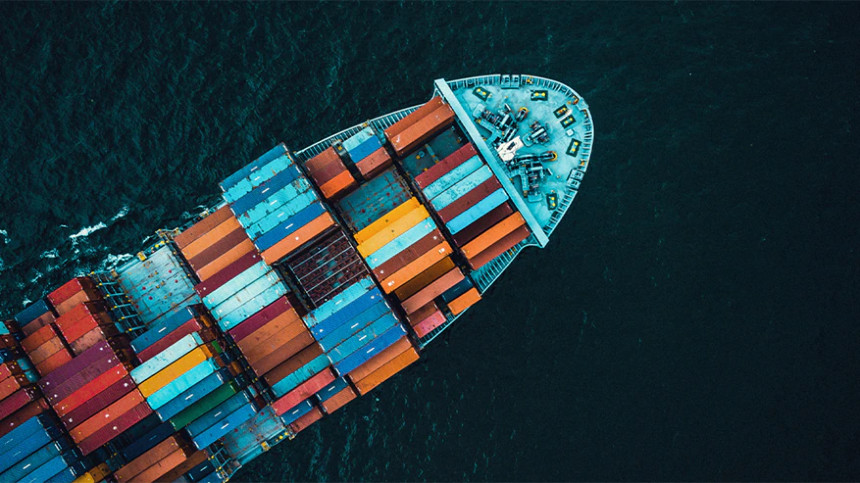Mitsui O.S.K. Lines, or MOL, the world’s largest operator of LNG carriers, expects to expand investment in its LNG businesses and boost its super-chilled fuel carrier fleet to around 150 vessels by 2030, buoyed by its solid position for the energy transition, President and CEO Takeshi Hashimoto told S&P Global Commodity Insights.
After a period marked by headwinds in the LNG sector, Hashimoto said he now sees support for LNG as a transition fuel in Japan and abroad, adding that he has reinforced his view during his attendance at the general assembly of the International Group of Liquefied Natural Gas Importers, or GIIGNL, in Hiroshima.
“We can now comfortably expand our investment in the LNG business to some extent after having confirmed LNG as a significantly important business in the energy sector,” Hashimoto said in an interview with Commodity Insights Oct. 7 on the sidelines of the GIIGNL general assembly.
“As we are working very hard to transition the use of fuel oil to LNG [for bunkering] as a shipping company, we could also get supportive sentiment for this direction [at the assembly],” he said.
Hashimoto expects the global LNG demand to “definitely increase for a while,” he said, adding that his attendance at the assembly strongly reaffirmed his view that demand growth will shift from such mature markets as Japan, South Korea and Taiwan to Southeast Asia, India and South America.
“Currently we are operating about 100 LNG ships, with a decision having already been made to increase it to about 140 ships,” Hashimoto said of its ordered ships to complete by around 2028 or 2029.
“We could almost see an increase a bit more to about 150 ships” by around 2030, he added.
In addition to LNG carriers, MOL also sees growth potential in floating storage and regasification units, floating storage units and floating LNG businesses in Southeast Asia and India, which will be followed by Africa and South America.
US factor
During the GIIGNL assembly, Hashimoto said there were views of a revival in US LNG exports after the suspension of US LNG export permits is eventually lifted.
Hashimoto said that lifting paused US LNG export permits is not only strongly desired by US companies but also in the Asia market — where companies need a large volume of LNG amid difficulties in increasing purchases from the Middle East due to the ongoing geopolitical risks — as well as from Russia.
Asked about MOL’s response to US sanctions targeting Russia’s Arctic LNG 2, Hashimoto said that the company does not plan to deliver three LNG carriers being built at a dockyard in South Korea to Russia’s Arctic LNG 2 anymore, following US sanctions.
“As a result of the Arctic LNG 2 being sanctioned directly, we cannot hand over ships to the Arctic LNG 2 [project],” Hashimoto said, adding that the situation has left the company with two options of either selling the ships or using them other than Arctic LNG 2.
“We are currently exploring both options,” he said, adding that the company will take a decision by the time the ships are completed, sometime after the end of this year.
In October 2020, MOL signed charter agreements for three icebreaking LNG carriers with LLC Arctic LNG 2, to be built at Daewoo Shipbuilding & Marine Engineering, currently known as Hanwha Ocean, for delivery in 2023.
Shipping safety
Commenting on escalating tensions in the Middle East, Hashimoto said that any closure of the Strait of Hormuz would have an “enormous impact” on the Japanese economy, with oil tankers, LNG and LPG carriers’ shipping in the Persian Gulf affected.
“In the case of [difficulty to transit] the Suez Canal, it could be altered by taking the route of Cape of Good Hope by spending money and number of ships,” Hashimoto said. “There is nothing you can do if you can’t enter the Persian Gulf.”
Asked whether MOL has started considering the worst-case scenario in its Strait of Hormuz contingency planning, Hashimoto said: “We would only have an option of not going in the event we cannot transit.”
As for the Suez Canal and Red Sea shipping route, Hashimoto said that MOL is currently in the midst of reviewing its earlier plan for managing its income and loss budget to resume shipping from as early as next January.
“By looking at the current Middle East situation, which does not appear to improve situations easily, I believe we would not be able to transit the Suez Canal for a while,” Hashimoto said.
“We now have to review our plans to consider resumption possibly from April next year or later,” he added.
Source: Platts






